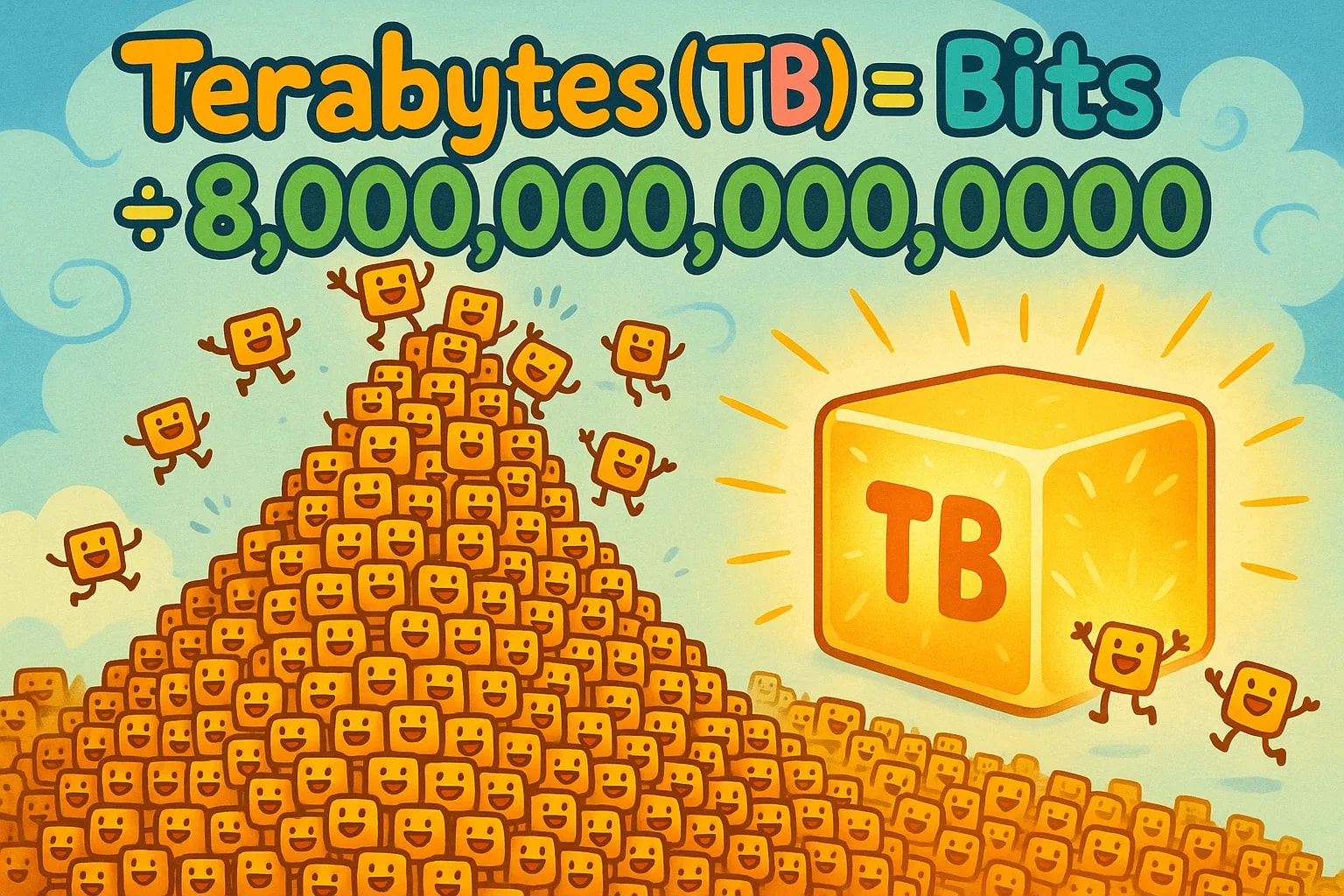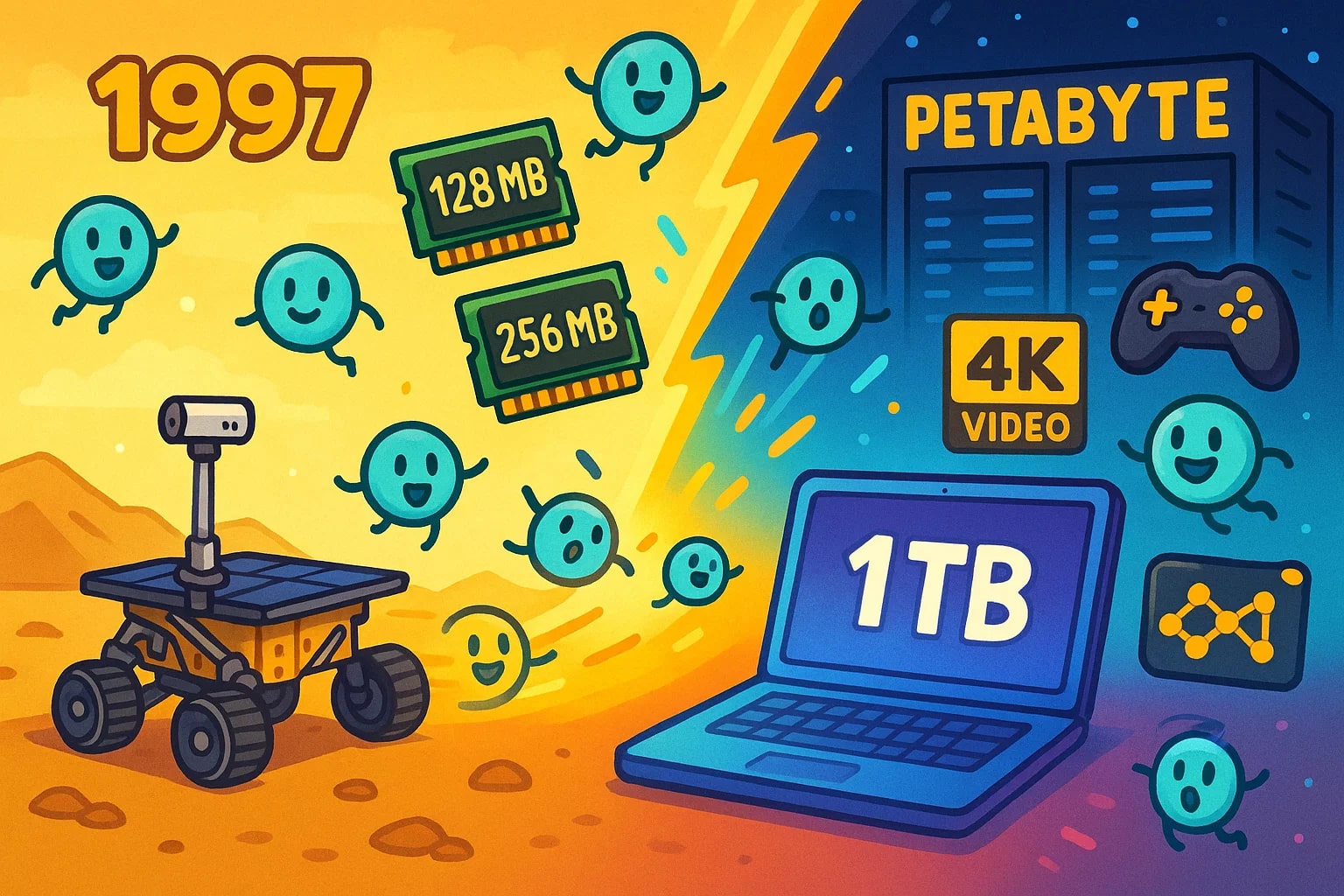bit to terabyte – How to convert bit to TB
If bits are the tiniest digital crumbs, then terabytes are the entire bakery. Whether you’re measuring internet traffic, enterprise storage, or system backups, sometimes you need to go from the bottom of the data scale (bits) to the top (terabytes). This guide shows you how to make that jump — clean, simple, and with real-world context.

What is a bit?
A bit (symbol: b) is the most basic unit of digital information. It can be either a 0 or a 1 — no in-between. Computers, networks, and devices communicate and process data in bits at the lowest level.
Everything digital — images, files, videos, apps — ultimately breaks down into millions, billions, or even trillions of bits.
What is a terabyte (TB)?
A terabyte (TB) is a massive unit of digital data, equal to 1,000,000,000,000 bytes, or 8,000,000,000,000 bits under the decimal (SI) system.
To break it down:
-
1 byte = 8 bits
-
1 kilobyte = 1,000 bytes
-
1 megabyte = 1,000,000 bytes
-
1 gigabyte = 1,000,000,000 bytes
-
1 terabyte = 1,000,000,000,000 bytes = 8,000,000,000,000 bits
Terabytes are commonly used to measure:
-
Hard drive and SSD capacities
-
Cloud storage limits
-
Backup sizes
-
Database volumes
-
Network data consumption at large scale
How to convert bit to terabyte
Since:
1 terabyte = 8,000,000,000,000 bits
The formula is simple:
terabytes = bits ÷ 8,000,000,000,000
✅ Example: Convert 32,000,000,000,000 bits to TB
Using the formula:
terabytes = 32,000,000,000,000 ÷ 8,000,000,000,000
terabytes = 4
So, 32 trillion bits equals 4 terabytes.
For quick calculations, try the Data Storage Converter or explore all the other Conversion tools on Jetcalculator.
Did you know?
-
A single 4K movie streamed over a high-quality connection can use up to 100 billion bits — or about 12.5 gigabytes.
-
In 2022, the average monthly internet usage per household in the U.S. was over 400 GB, which equals more than 3.2 trillion bits.
-
Large Hadron Collider experiments at CERN generate over 50 TB of raw data daily — that’s 400 trillion bits every 24 hours.
-
Modern hard drives are often measured in terabytes, but inside, they're still storing and accessing everything bit by bit.
-
High-volume data centers, like those operated by Amazon, Google, or Microsoft, manage storage on the scale of exabytes, or 8,000,000,000,000,000,000 bits.
From 1s and 0s to Global Storage – Bits at Terabyte Scale
Back in the early 1990s, a full terabyte was practically science fiction. Corporate servers had megabytes or maybe a few gigabytes at most. In fact, NASA’s Pathfinder mission to Mars in 1997 operated on just 128 MB of RAM and 256 MB of flash memory — less than what your phone’s calculator app uses today.
Fast forward to now: your laptop can hold 1 TB of storage, and high-end data centers juggle petabytes (1,000 TB) every hour. Video streaming, machine learning, and real-time analytics have made terabyte-scale data the new normal.
Even in personal use, we’ve shifted into the TB zone — especially with high-resolution photography, 4K/8K video, and game libraries pushing 100+ GB each. Every photo, every backup, every binge-watch adds up — in bits, billions at a time.

Every terabyte starts with a bit
It may seem like bits and terabytes live in totally different worlds — one microscopic, the other massive. But every terabyte is just 8 trillion bits, organized, compressed, and stored to handle everything from cat videos to climate models.
Remember the formula:
terabytes = bits ÷ 8,000,000,000,000
For high-volume calculations or comparing across other units, use Jetcalculator’s Data Storage Converter or browse even more Conversion tools to keep your numbers clear and reliable.

